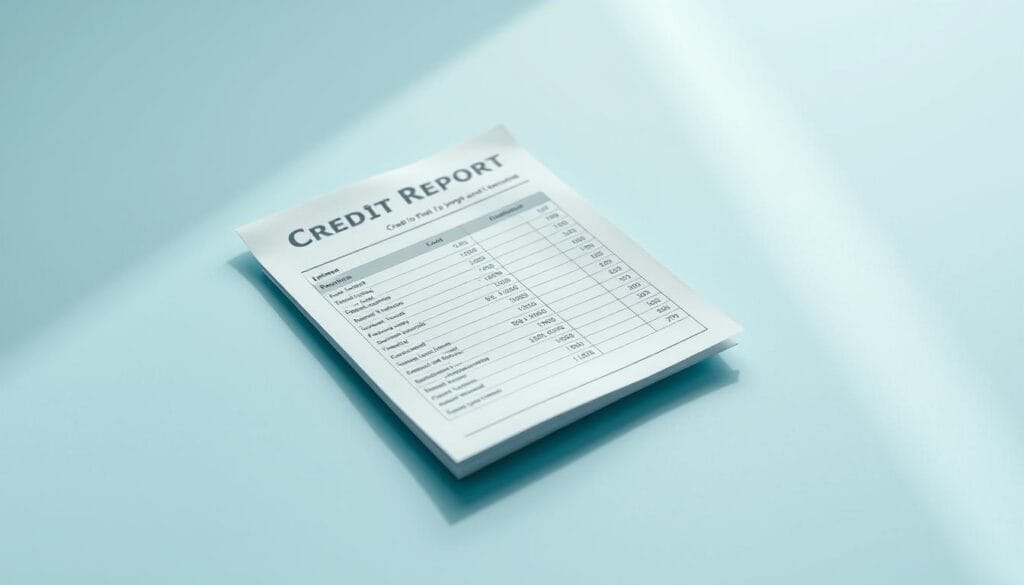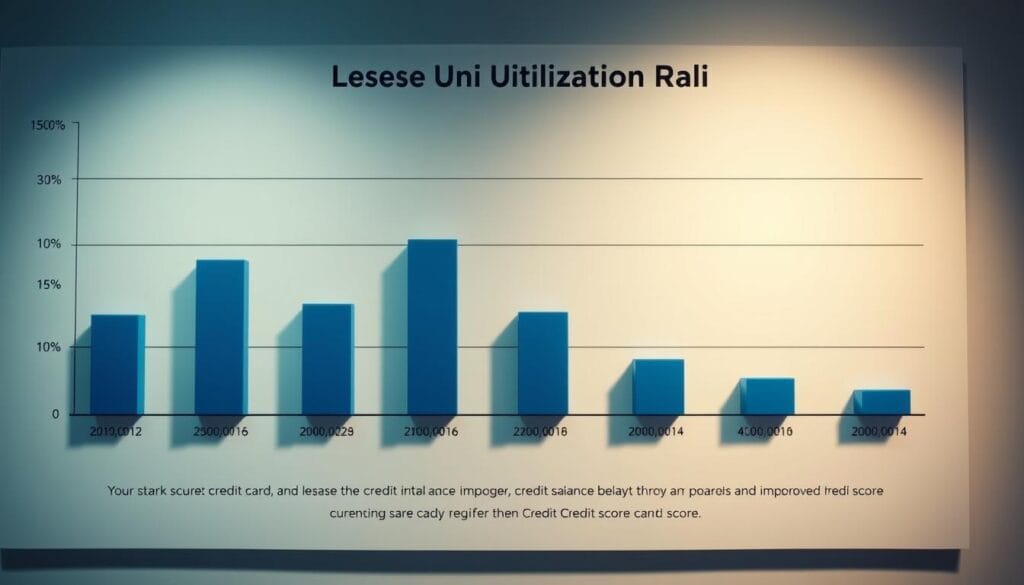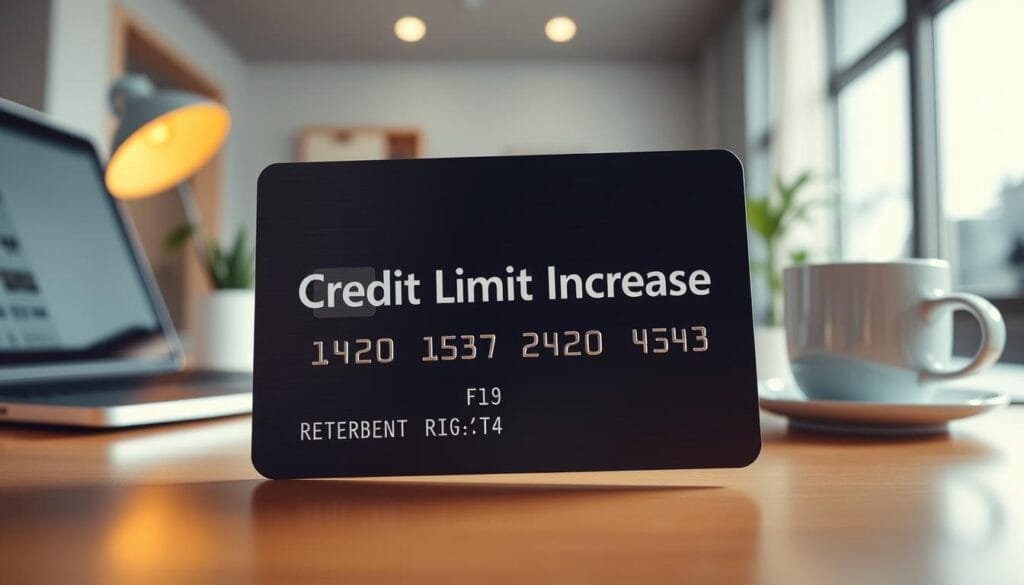Did you know that a significant 36% of Americans have a credit score below 670, potentially limiting their financial opportunities? A credit score is a crucial indicator of your creditworthiness, reflecting your ability to manage debt and make timely payments.
Fortunately, enhancing your credit score doesn’t necessarily require making extra payments. By adopting a strategic, month-by-month approach, you can systematically improve your credit standing. This comprehensive guide outlines practical techniques to optimize your existing credit accounts and financial habits, ultimately strengthening your credit profile.
Key Takeaways
- Learn a month-by-month strategy to enhance your credit score.
- Understand the key factors influencing your credit score.
- Discover how to positively impact your credit score without extra payments.
- Implement sustainable habits for long-term credit health.
- Expect gradual improvements in your credit score within 30-45 days.
Understanding Your Credit Score

A credit score is more than just a number; it’s a key factor in determining your financial health. Your credit score influences not only your ability to secure loans but also the interest rates you’re offered by lenders.
What Makes Up Your Credit Score
Your credit score is calculated based on several factors, including your payment history, credit utilization, length of credit history, credit mix, and new credit inquiries. Understanding these components can help you identify areas for improvement.
Why Your Credit Score Matters
Your credit score can significantly impact your financial opportunities. For instance, a higher credit score can qualify you for better loan terms, including lower interest rates. Conversely, a lower score may result in higher interest rates or even loan denials. The average credit score in the U.S. is around 718, with scores above 760 typically qualifying for the best interest rates.
| Credit Score Range | Interest Rate | Loan Approval Odds |
|---|---|---|
| 760+ | Low (around 4%) | High |
| 700-759 | Moderate (around 6%) | Good |
| Below 700 | High (around 10% or higher) | Lower |
Improving your credit score can save you thousands of dollars over the life of a loan. For more information on how to leverage your credit score for better loan terms, visit this resource to explore options for bad credit loans in 2025.
Getting Started: Checking Your Credit Report

Reviewing your credit report is the foundational step in taking control of your credit score. It’s essential to understand what’s in your report before you can make improvements.
How to Access Your Free Credit Reports
You can obtain your free credit reports from the three major credit bureaus: Equifax, Experian, and TransUnion. Visit AnnualCreditReport.com or contact each bureau directly to request your reports. Make sure to review each report carefully, as the information may vary between bureaus.
What to Look for in Your Credit Report
When reviewing your credit report, check for accuracy in your personal information, accounts, and debt listings. Verify that all accounts are yours and that any debt you’ve paid off is reported correctly. Look for any signs of identity theft or errors, such as incorrect addresses or unknown accounts
Dispute any inaccuracies you find, and consider freezing your credit report if you’re not planning to apply for new credit soon. This helps protect against identity theft.
Month 1: Establishing a Payment Schedule
Making timely payments is vital, and setting up a payment schedule can help ensure you never miss a due date. Always making at least the minimum payment by the due date is crucial for maintaining a good credit score. You can set up payment reminders and automatic payments within your accounts to avoid accidentally missing a due date. Just make sure you have enough money in your accounts to cover your bills.
Setting Up Automatic Payments
Setting up automatic payments is a convenient way to ensure you never miss a payment. By automating your payments, you can rest assured that your credit card bills will be paid on time. To set up automatic payments, log in to your account, navigate to the payment settings, and select the automatic payment option. You can usually choose to pay the minimum amount, the full balance, or a fixed amount.
Creating Payment Reminders
In addition to automatic payments, setting up payment reminders can provide an extra layer of assurance. You can use digital calendar apps like Google Calendar or Apple Calendar to set recurring alerts several days before each bill’s due date. Dedicated bill reminder apps can also track all your payment due dates and send notifications to your smartphone. For a more traditional approach, consider creating a visual bill payment calendar for your home. You can also use your creditors’ text or email alert systems to receive reminders directly. For more information on managing your finances effectively, visit Best Installment Loans for Emergencies.
| Reminder Method | Description | Benefits |
|---|---|---|
| Digital Calendar Apps | Set recurring alerts for bill due dates | Customizable reminders, accessible on multiple devices |
| Dedicated Bill Reminder Apps | Track all payment due dates in one place | Centralized tracking, smartphone notifications |
| Visual Bill Payment Calendar | Create a physical calendar for home use | Monthly overview, no need for digital devices |
Month 2: Tackling Your Credit Utilization Ratio

In the second month of your credit score improvement journey, it’s crucial to tackle your credit utilization ratio. Your credit utilization ratio is the percentage of available credit being used, and it significantly impacts your credit score.
Understanding the 30% Rule
The 30% rule is a guideline suggesting that you should keep your credit utilization ratio below 30%. This means that if you have a credit limit of $1,000, you should try to keep your balance below $300. Keeping your utilization ratio low demonstrates to lenders that you can manage your credit responsibly.
Why is the 30% Rule Important? Exceeding this threshold can negatively affect your credit score. For instance, maxing out your credit cards can significantly lower your score, making it harder to obtain credit in the future.
Strategies to Lower Utilization Without Extra Payments
Lowering your credit utilization ratio without making extra payments can be achieved through several strategies. One effective method is to request a credit limit increase, which can immediately improve your utilization ratio by expanding your available credit.
- Making multiple smaller payments throughout the month to keep your reported balance lower.
- Timing your payments strategically by understanding when your credit card issuer reports to the credit bureaus.
- Keeping old accounts open to maintain higher total available credit.
- Distributing your spending across multiple cards to keep individual card utilization low.
| Strategy | Description | Benefit |
|---|---|---|
| Request Credit Limit Increase | Ask your credit card issuer to increase your credit limit. | Lowers credit utilization ratio without changing your spending. |
| Make Multiple Payments | Pay your credit card bill multiple times a month. | Keeps your reported balance lower, reducing utilization. |
| Keep Old Accounts Open | Maintain old credit accounts even with zero balances. | Maintains higher total available credit, lowering utilization. |
Month 3: Addressing Negative Items on Your Report

During the third month, scrutinize your credit report for negative items and take corrective action. Continuing to pay your bills on time remains crucial as your payment history significantly affects your overall credit score.
How to Dispute Errors
Identify any errors on your report and dispute them. This process involves contacting the credit reporting agency, specifying the error, and providing documentation to support your claim. Correcting errors can significantly improve your credit history.
Dealing with Legitimate Negative Items
For legitimate negative items, such as late payments or collections, consider writing “goodwill letters” to your lenders if you have an otherwise positive payment history. You can also negotiate with collection agencies for pay-for-delete arrangements. Remember, the impact of negative items diminishes over time, and continuing positive credit behaviors is key.
Month 4: Optimizing Your Credit Mix

As we progress into the fourth month of improving our credit score, it’s essential to focus on optimizing our credit mix. A well-balanced credit mix can positively influence your credit score by demonstrating your ability to manage different types of credit.
Balancing Revolving and Installment Credit
A healthy credit mix includes both revolving credit, such as credit cards, and installment loans, like student loans or personal loans. To achieve this balance, consider the types of credit you currently have. If you only have credit cards, adding an installment loan could be beneficial. Conversely, if you have mostly installment loans, a credit card might be a good addition.
When to Consider New Credit Types
Applying for new credit can be both beneficial and detrimental to your credit score. It’s crucial to be strategic. Avoid applying for multiple credit accounts in a short period, as this can indicate a higher credit risk. Instead, consider credit-builder loans or secured credit cards if you’re looking to diversify your credit mix with limited credit history.
- Evaluate your financial needs before applying for new credit.
- Avoid new credit applications before major loan applications, like mortgages.
- Consider the long-term benefits of diversifying your credit mix.
Month 5: Managing Existing Credit Accounts

As we progress into the fifth month of our credit score improvement journey, it’s essential to focus on managing our existing credit accounts effectively. This involves two key strategies: keeping old accounts active and requesting credit limit increases.
Keeping Old Accounts Active
Maintaining old accounts is vital for a healthy credit history. Closing old accounts can negatively affect your credit utilization ratio and reduce the average age of your accounts, both of which are critical factors in determining your credit score. To keep old accounts active, consider using them for small, regular purchases and ensuring you pay off the balance in full each month.
Requesting Credit Limit Increases
Raising your credit limit on an existing account can increase the amount of available credit and decrease your credit utilization ratio. You can request a credit limit increase from your current lender, especially if your income has increased since you last applied for a credit card. It’s crucial to understand that a higher credit limit should be viewed as a tool for improving your credit score, not as an invitation to increase spending.
| Strategy | Benefits | Precautions |
|---|---|---|
| Keeping Old Accounts Active | Maintains credit history, improves credit age | Avoid inactivity, make small purchases |
| Requesting Credit Limit Increases | Lowers credit utilization ratio, increases available credit | Don’t increase spending, request wisely |
Month 6: Improve Credit Score Monthly Steps Without New Debt
As we progress into the sixth month of our credit improvement journey, it’s essential to explore new strategies that can help enhance our credit score without accumulating new debt. At this stage, we’ve already laid a solid foundation by checking our credit report, establishing a payment schedule, tackling our credit utilization ratio, addressing negative items, and optimizing our credit mix. Now, we can focus on more advanced techniques.
Becoming an Authorized User
One effective way to improve your credit score is by becoming an authorized user on someone else’s credit account, typically a family member or close friend with good credit habits. This means you’ll be added to their account and can benefit from their positive payment history. However, it’s crucial to ensure that the primary account holder has a good credit history and that the credit card issuer reports authorized user activity to the credit bureaus.
Using Secured Credit Cards Strategically
Applying for a secured credit card can be a strategic move to improve your credit without new debt. A secured credit card requires a security deposit, which becomes your credit limit, and is reported to the credit bureaus just like a regular credit card. To use it effectively, keep your utilization low and make timely payments. By doing so, you’ll start building a positive payment history. Typically, after 6-12 months of responsible usage, you may be eligible to upgrade to an unsecured credit card.
Tracking Your Progress: Monthly Credit Score Monitoring
To get the most out of your credit improvement strategies, it’s vital to monitor your credit score monthly. This allows you to assess the effectiveness of your efforts and make adjustments as needed.
Free Credit Score Resources
You can access your credit score for free through various online platforms, such as Credit Karma, Credit Sesame, or through your credit card issuer. These resources provide a convenient way to track your credit score and receive alerts about changes to your report.
Understanding Score Fluctuations
Credit scores can fluctuate from month to month due to various factors, including changes in credit utilization, payment history, and credit inquiries. Understanding these fluctuations is crucial to interpreting the impact of your improvement strategies. For instance, a temporary drop in your score might occur after applying for new credit or experiencing a high statement balance. However, by focusing on long-term trends rather than short-term fluctuations, you can better gauge the effectiveness of your efforts.
Different scoring models and credit bureaus may show varying scores and fluctuations. Be aware of these differences when monitoring your credit score. By doing so, you’ll be able to make informed decisions about your credit health and stay on track with your improvement plans.
Conclusion: Building Long-Term Credit Health
Enhancing your credit score is a gradual process that involves making informed financial decisions and staying committed to your goals. By following the six-month plan outlined in this article, you can improve your credit score without making extra payments. This journey involves establishing a payment schedule, tackling your credit utilization ratio, addressing negative items on your report, optimizing your credit mix, managing existing credit accounts, and monitoring your progress.
As you integrate these monthly steps into your financial routine, you’ll not only enhance your credit score but also develop healthy financial habits that will benefit you in the long run. Remember, good credit is a result of consistent positive habits over time. For those dealing with debt, exploring options like debt consolidation loans can be a strategic move to simplify your finances and potentially lower your interest rates.
By maintaining good credit habits and being patient with the process, you’ll be well on your way to achieving a better credit score, which can lead to lower interest rates, better loan terms, and more financial opportunities. Stay committed, and you’ll reap the rewards of your efforts.
FAQ
What is a good credit utilization ratio?
FAQ
What is a good credit utilization ratio?
A good credit utilization ratio is typically considered to be below 30%. This means that if you have a credit limit of
FAQ
What is a good credit utilization ratio?
A good credit utilization ratio is typically considered to be below 30%. This means that if you have a credit limit of $1,000, you should try to keep your balance below $300.
How often should I check my credit report?
You should check your credit report at least once a year, and before applying for credit. You can request a free credit report from the three major credit reporting bureaus: Equifax, Experian, and TransUnion.
What is the impact of late payments on my credit score?
Late payments can significantly lower your credit score. Payment history accounts for 35% of your credit score, so making on-time payments is crucial.
Can I request a credit limit increase without a hard inquiry?
Some credit card issuers, such as Chase and Citi, may allow you to request a credit limit increase without a hard inquiry. However, this is not always the case, and it’s best to check with your issuer directly.
How does being an authorized user affect my credit score?
Being an authorized user on someone else’s credit account can help you build credit if the primary account holder makes on-time payments. However, if they miss payments, it can negatively affect your credit score.
What is a secured credit card, and how can it help me?
A secured credit card is a type of credit card that requires a security deposit, which becomes your credit limit. It can help you build or rebuild credit if you make regular payments.
How long does it take to see improvements in my credit score?
The time it takes to see improvements in your credit score varies depending on your individual circumstances. However, you can typically expect to see improvements within a few months of making on-time payments and keeping credit utilization low.
Can I dispute errors on my credit report?
Yes, you can dispute errors on your credit report by contacting the credit reporting bureau and providing documentation to support your claim.
,000, you should try to keep your balance below 0.
How often should I check my credit report?
You should check your credit report at least once a year, and before applying for credit. You can request a free credit report from the three major credit reporting bureaus: Equifax, Experian, and TransUnion.
What is the impact of late payments on my credit score?
Late payments can significantly lower your credit score. Payment history accounts for 35% of your credit score, so making on-time payments is crucial.
Can I request a credit limit increase without a hard inquiry?
Some credit card issuers, such as Chase and Citi, may allow you to request a credit limit increase without a hard inquiry. However, this is not always the case, and it’s best to check with your issuer directly.
How does being an authorized user affect my credit score?
Being an authorized user on someone else’s credit account can help you build credit if the primary account holder makes on-time payments. However, if they miss payments, it can negatively affect your credit score.
What is a secured credit card, and how can it help me?
A secured credit card is a type of credit card that requires a security deposit, which becomes your credit limit. It can help you build or rebuild credit if you make regular payments.
How long does it take to see improvements in my credit score?
The time it takes to see improvements in your credit score varies depending on your individual circumstances. However, you can typically expect to see improvements within a few months of making on-time payments and keeping credit utilization low.
Can I dispute errors on my credit report?
Yes, you can dispute errors on your credit report by contacting the credit reporting bureau and providing documentation to support your claim.

